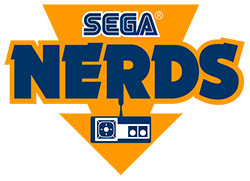
SEGA Genesis Mini and some games that should have been added to its library
At Sega Fes 2019, Sega surprised the veteran gaming crowd by announcing development on a miniature version of their Sega Genesis console, which was originally released in 1988. The Sega Genesis is fondly remembered by an older gaming crowd as being a serious competitor to Nintendo throughout the late 80s and early 90s. It’s the first console (albeit a miniature version of a retro console) that Sega has released in over 20 years, since the Sega Dreamcast debacle (which was a rather good system, in Sega’s defense).
In any case, Sega released the Genesis Mini in September of 2019, and it came with 42 pre-installed games. The roster of titles are mostly Sega’s biggest hits, such as Virtua Fighter 2, Eternal Champions, Road Rash 2, and of course, Sonic the Hedgehog. It’s a roster of games sure to bring nostalgia back to any older gaming fans (if you owned a Sega Genesis in the 90s).
If you’re a fan of retro gaming, you can also check out Casumo casino, which not only offers the latest online casino games but handfuls of great retro titles as well.
Can the Genesis Mini library be expanded?
Sadly, while the Genesis Mini is indeed a working replica of the Sega Genesis, it lacks some features like oh, say, a working cartridge slot. Oh, there’s a cartridge slot, but it’s for appearances only. The same goes for the non-functioning Sega CD, Sega 32X, and miniature Sonic cartridges accessories sold separately.
So there is currently no official method of adding new games to the Genesis Mini, or playing any old Sega Genesis cartridges you have (in which case, you likely own an original Genesis console), but an unofficial hack tool allows you to load new games onto the built-in memory, similar to the tool that was released for the Nintendo SNES Classic Mini.
Still, 42 games is a lot, but it doesn’t cover all of the great gems the Sega Genesis had to offer, and so here we’re going to suggest some great classic Sega Genesis games that should’ve been included in the Genesis Mini. Also note that due to regional differences, some of these games may actually appear on the US/PAL version of the console, but not the Japanese or Chinese version, or vice versa.
Sword of Vermilion
A classic ARPG and the first console-exclusive title designed by Yu Suzuki, Sega’s head of the AM2 team for 18 years. Sword of Vermilion was highly innovative and downright experimental with its gameplay, and received overwhelmingly positive reception from critics upon its release.
The plot was basic save-the-world-from-evil-ruler stuff, but as we said, the gameplay was fairly ahead of its time.
It used different camera views for different situations. In towns you had a basic top-down camera familiar to the ARPG genre, while battles had a more tilted camera, dungeon exploration was done in first-person, and boss battles were in sideways view.
The graphics were also greatly praised, with a lot of attention paid to sprite details, especially in towns and boss fights.
Shadowrun
Based on the popular tabletop RPG, this Genesis classic was an awesome sci-fi ARPG with non-linear gameplay, and could be seen as a preview of open-world RPGs to come. Shadowrun wasn’t the first open-world game, but its popularity and innovative mechanics (at the time) make it an example of the beginnings of a future genre to come.
Shining Force II
A highly appealing fifth entry into the Shining series, Shining Force II featured non-linear gameplay and a tactical-strategy approach that was simultaneously different from JRPGs and WRPGs alike. It was one of the best-selling Sega Genesis games in Japan, but strangely, Shining Force II is not included in the NA/PAL or JP version of the Genesis Mini. It is however included on the Chinese/Korea version.
Phantasy Star II
To Sega’s credit, they did include Phantasy Star IV on the Genesis Mini, but Phantasy Star II is where it all started. Phantasy Star II was the first game to use a 6 megabit cartridge, as well as the first 16-bit RPG to be released for Sega Genesis outside of Japan.
The Phantasy Star series barely changed gameplay throughout all of the sequels, so playing Phantasy Star IV on the mini is the same experience as playing PSII, but still, it’s a real gem for nostalgia as literally the first RPG released on Genesis for the western market.





